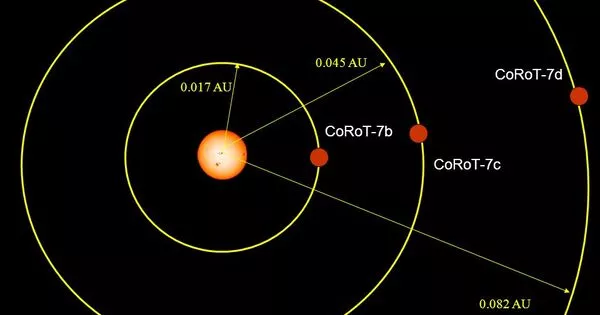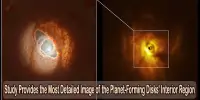The most precise distance measurement to date of the ultra-diffuse galaxy (UDG) NGC1052-DF2 (DF2) confirms that it is devoid of dark matter. An international team of researchers led by Yale University’s Zili Shen and Pieter van Dokkum, as well as Shany Danieli, a NASA Hubble Fellow at the Institute for Advanced Study, obtained the newly measured distance of 22.1 +/-1.2 megaparsecs.
“Determining an accurate distance to DF2 has been critical in supporting our previous results,” Danieli said. “The new measurement reported in this study has significant implications for estimating the physical properties of the galaxy, confirming its lack of dark matter.”
The findings, which will be published in Astrophysical Journal Letters on June 9, 2021, are based on 40 Hubble Space Telescope orbits, imaging by the Advanced Camera for Surveys, and a “tip of the red giant branch” (TRGB) analysis, the gold standard for such refined measurements. Based on 12 Hubble orbits and TRGB analysis, the team published results in 2019 measuring the distance to neighboring UDG NGC1052-DF4 (DF4), which provided compelling evidence of missing dark matter. This preferred method builds on the team’s previous research, which relied on “surface brightness fluctuations” to determine distance. Both galaxies were discovered with the Dragonfly Telephoto Array at the New Mexico Skies observatory.
The most accurate distance measurement yet of ultra-diffuse galaxy confirms beyond any shadow of a doubt that it is lacking in dark matter. The newly measured distances of 22.1 +/-1.2 megaparsecs are based on 40 orbits of NASA’s Hubble Space Telescope, with imaging by the Advanced Camera for Surveys and a ‘tip of the red giant branch’ analysis.
“With our initial Hubble observations of this galaxy in 2018, we went out on a limb,” van Dokkum said. “People were right to be skeptical because the outcome was so unusual. It would be nice if there was a simple explanation, such as a miscalculated distance. But I think it’s more fun and interesting if it’s a strange galaxy.”
In addition to confirming previous distance findings, the Hubble results showed that the galaxies were slightly farther away than previously thought, bolstering the case that they contain little to no dark matter. If DF2 were closer to Earth, as some astronomers claim, it would be intrinsically fainter and less massive, and the galaxy would require dark matter to account for the total mass’s observed effects.

Dark matter is widely assumed to be a necessary component of galaxies, but this study adds to the evidence that its presence may not be unavoidable. While dark matter has yet to be directly observed, its gravitational influence acts as a glue that holds galaxies together and governs visible matter motion. In the case of DF2 and DF4, researchers were able to account for star motion solely on the basis of stellar mass, indicating the presence or absence of dark matter. In an ironic twist, the discovery of galaxies deficient in the dark matter will most likely aid in elucidating its perplexing nature and providing new insights into galactic evolution.
While DF2 and DF4 are both comparable in size to the Milky Way, their total masses are only about 1% of the Milky Way’s. These ultra-diffuse galaxies were also discovered to have a dense population of particularly luminous globular clusters.
This research has sparked scholarly interest as well as a heated debate among proponents of alternative dark matter theories, such as Modified Newtonian dynamics (MOND). However, given the team’s most recent findings, such as the relative distances of the two UDGs from NGC1052, such alternative theories appear less likely.
Furthermore, thanks to the use of the TRGB method, there is now little uncertainty in the team’s distance measurements. This method is based on the observation of red giant stars that emit a flash after burning through their helium supply, which always happens at the same brightness.
“There’s an old adage that extraordinary claims necessitate extraordinary evidence,” Shen explained. “The new distance measurement strongly supports our previous finding that DF2 is missing dark matter.” “It’s time to move past the distance debate and look at how such galaxies came to be.”
Moving forward, researchers will continue to look for more of these out-of-the-ordinary galaxies, while also pondering questions such as: How do UDGs form? What do they say about conventional cosmological models? How common are these galaxies, and what other distinguishing features do they have? It will take many more dark matter-free galaxies to solve these mysteries and answer the ultimate question of what dark matter is.
















